Over the years, there’s a response I’ve come to expect from readers and enthusiasts I meet. Whenever I mention that I’m reviewing a restomod, regardless of make or model, I’m met with some version of the following.
“That’s cool, but have you driven an ICON?”
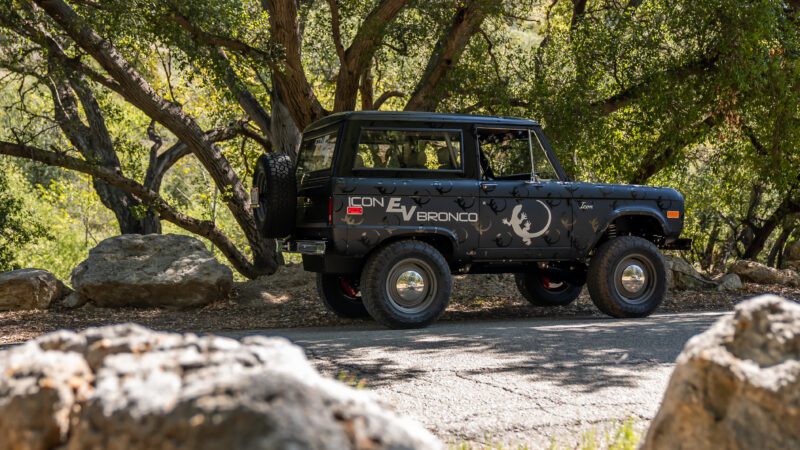
Up until a few days ago, I hadn’t. Based in Chatsworth, California, ICON practically pioneered the restomod space. Its focus on quality and obsession with details means it also sets the standard by which competitors measure up. You’d be surprised to learn just how many companies pitch their products for review by claiming to be “like ICON” only to then add “but cheaper” or “with quicker build times” or some other modifier that’s meaningless when discussing re-engineered classics costing well over six figures.
I stand in ICON’s expansive workshop, surrounded by completed cars, in-progress builds, and a few body-less frames. Fast and cheap seem like foreign concepts here. Company founder and CEO Jonathan Ward leads the tour alongside Moment Motors founder Marc Davis. Ward moves quickly, in one instance pointing to the weld quality on a chassis, the next showcasing a unique fabric sourced for an upcoming build, only to pivot yet again, excited to discuss projects he’d like to take on. It quickly becomes apparent that ICON’s enthusiasm and detail obsession start at the very top.
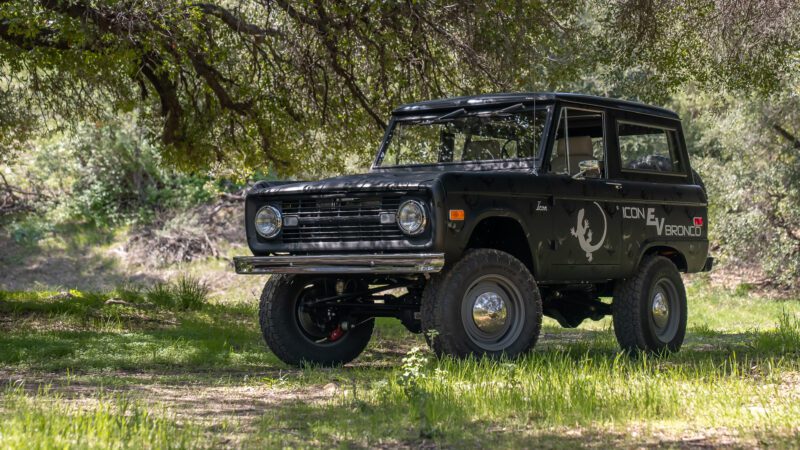
However, I’m not here to drive one of the Toyota Land Cruisers that put ICON, formerly an FJ restoration and servicing center known as TLC, on the map. Instead, Ward and Davis led me to a matte black prototype parked in the middle of the workshop. At first glance, it looks like one of the many Ford Broncos the builder sells alongside its lineup of Chevy Thriftmasters. Still, a decal adorning its rear quarter panel denotes a key difference. Its hood doesn’t hide a fresh crate V8 from Ford but a battery pack instead. ICON’s first electric restomod is a $449,000 off-roader, of which just ten will ever exist.
I use the word “first” loosely because Ward says this isn’t the first time he’s swapped cylinders for batteries. However, his previous attempts only confirmed that the technology wasn’t ready to be incorporated into an ICON build. Moment Motors joined the project with solutions, the Austin-based firm having experience in electric-swapping cars of various makes and models. Over an 18-month development cycle, the two companies poured over 5,000 hours into creating an electric drivetrain explicitly designed for this application.
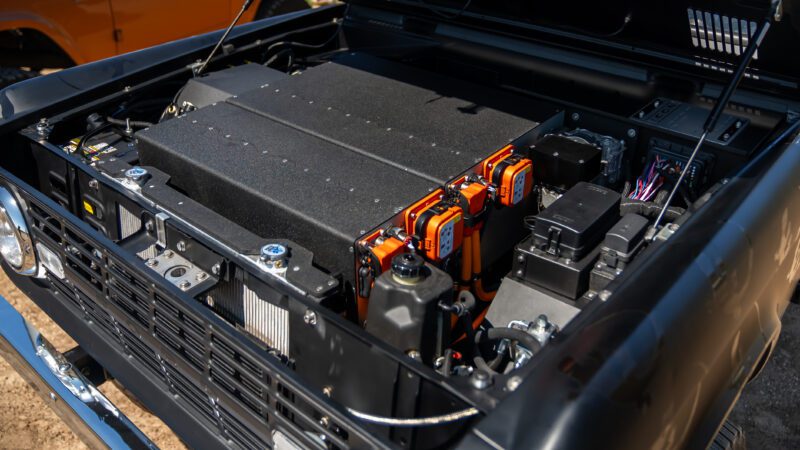
I see the battery pack hidden below as Ward raises the prototype’s hood. Split into two enclosures, the second nestled beneath the truck’s rear end, it sports a total capacity of 105 kilowatt-hours. The electrons it stores flow to a centrally-mounted drive unit that replaces this truck’s transmission and transfer case. Mated to a full-time all-wheel-drive system, this setup develops 500 horsepower and 440 pound-feet of torque, allowing a time to 60 mph of just 4.5 seconds. ICON estimates up to 200 miles of real-world range from this 400-volt system and can jump from 20 to 80 percent state of charge in under an hour when DC fast charging.
As we pull out of the workshop and in search of a winding road, the benefits of an electrified classic are instantly recognizable. As I’m sure many of you have also learned the hard way, vintage car ownership takes commitment. A level of dedication beyond the ability to keep a cool head during a breakdown or a willingness to stomach costly repair builds. Modern cars have spoiled us, and it’s not until we get behind the wheel of something decades old that we realize just how well-isolated, comfortable, and easy to drive they’ve become.
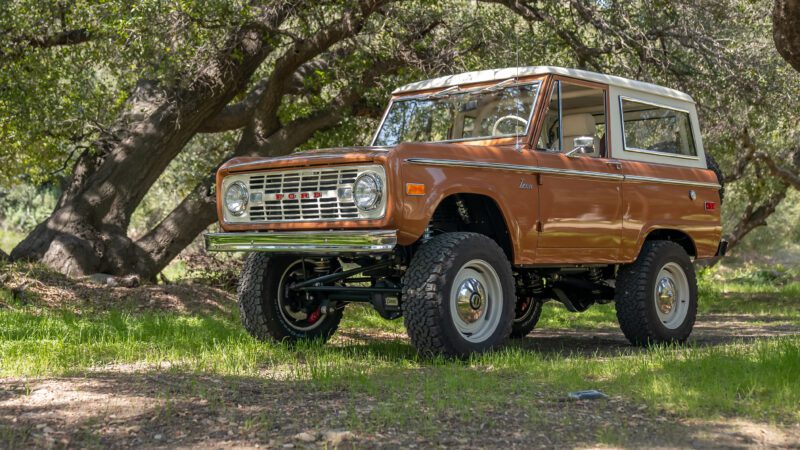
Having grown up around older off-roaders, I’m familiar with how archaic the experience can feel as a driver and passenger. Before stepping into the EV, however, Ward suggests I familiarize myself with ICON by taking a V8-powered Bronco for a quick spin; this two-tone example sports a manual transmission.
A few miles in, I’m comfortable behind the wheel. It’s easy to drive. It accelerates, stops, and steers beautifully while retaining its vintage charm, a feat the original could only dream of. A free-flowing exhaust allows its V8 to sing its burbly note on the throttle while underscoring the experience with a rowdy note at idle. It’s, without question, the best driving restomod I’ve tested to date, one that feels thoroughly developed, not just the byproduct of off-the-shelf components thrown together under pretty bodywork.
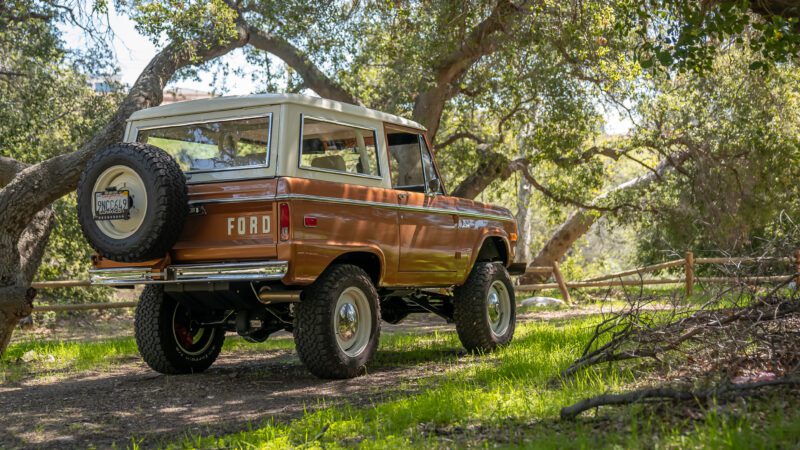
However, the EV manages to be even better. The electric Bronco adds a level of refinement to the experience that only broadens its use case. As a fan of naturally aspirated V8s, even I can instantly see the appeal. The internal combustion truck might be a thriller but remains a vehicle for special occasions. It is the kind of thing you’d take out for a Sunday drive along the Pacific Coast or to cruise on the open road. Its electric twin, however, shines by being far more of a go-anywhere, do-anything sort of machine.
It’s not even its tremendous power output that impresses most, as ICON has opted to reduce it for this drive while it finalizes the calibration of its max output Sport mode. Yet, as we cruise in the middle Normal setting with Eco available to maximize range, this Bronco’s electric drive unit introduces a level of smoothness to the driving experience that further bridges the gap between a modern vehicle and a classic.
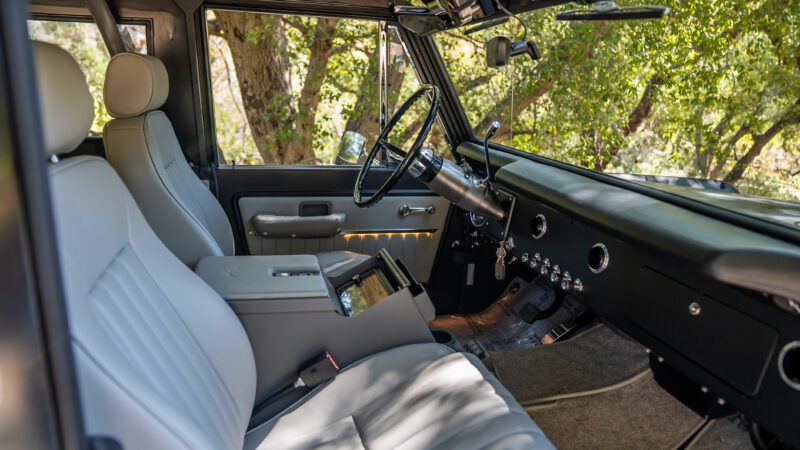
Its central screen, the same unit that houses its reverse camera while offering Apple CarPlay and Android Auto connectivity, doubles as the control for this truck’s drive modes while also displaying drivetrain information. An analog gauge left of the steering wheel retains the vibe of its original counterpart and incorporates only a small display.
Its electro-hydraulic steering is relatively light and, crucially for a proper off-roader, has no issues tracking straight without constant inputs. Its upsized Brembo brakes offer plenty of stopping power but don’t produce unnecessary noise around town. Despite swapping an internal combustion engine in favor of batteries, this Bronco retains the formula integral to ICON’s success. It pairs a bespoke Reiger suspension with the builder’s multi-link setup. It sports Currie axles, an ARB locking front differential, and a limited-slip unit out back.
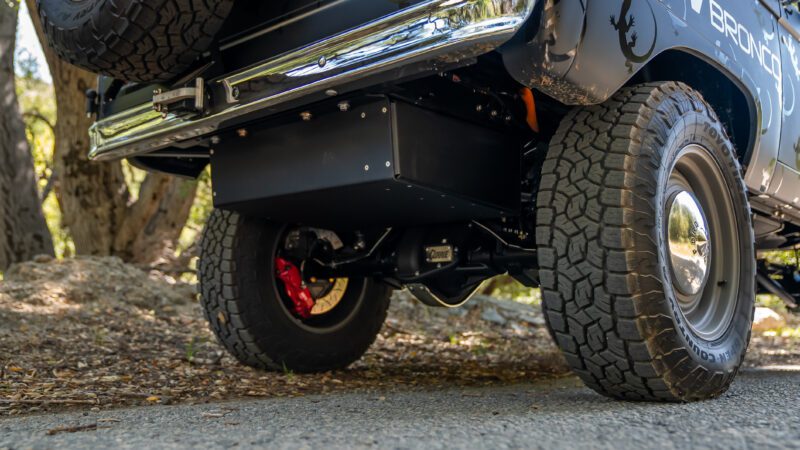
Weighing in at 5,420 pounds, ICON’s first EV is far heavier than its internal combustion twin. Yet, its split battery pack allows it to retain good weight distribution while its added heft helps further smooth the ride. The two halves of the pack are enclosed in waterproof housings, meaning they can be submerged in up to 3.3 feet of water for up to 30 minutes without issue.
Ward jumps into the driver’s seat on the way back to his workshop, eager to demonstrate the truck’s max output mode. As we reach a highway underpass, he floors the accelerator, and this decade-old truck takes off. Quick EVs are nothing new, but this level of instant performance is far more striking when it powers a tall vintage off-roader.
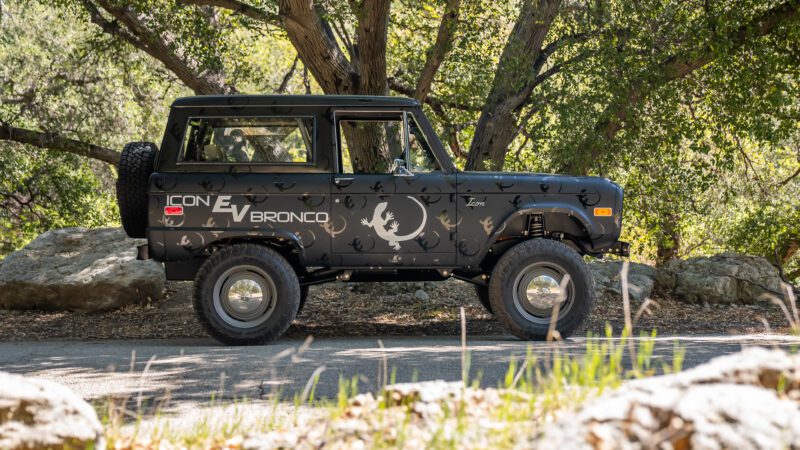
Herein lies the ICON EV Bronco’s greatest strength. Like the V8-powered truck I drove earlier, its driving experience is far from what you’d get from an unrestored original, yet even its adoption of electric propulsion fails to detract from its vintage character. This still ultimately feels like an old truck, just one whose improved ease of use makes it far more approachable to more people. Its use case broadens from idyllic drives to being genuinely daily usable, and more miles behind the wheels means more miles enjoyed.
ICON plans to build ten units of its EV Bronco as part of a special edition series. Offered in both the Old School and New School styles, it starts at $449,000, with deliveries expected to begin later this year. Ward plans to ensure that no two examples are identical, each custom-tailored to its owner.

Back at the builder’s workshop, it’s clear why I kept hearing the same statement from readers and enthusiasts year after year. ICON might have pioneered the space, but its reputation lives on because it builds the best restomods I’ve ever driven. There’s a completeness to these trucks that I haven’t experienced before, a byproduct of their extensive development and re-engineering.
While the EV Bronco is a first for the brand, it isn’t the first restomod to adopt this powertrain configuration. Yet, by waiting until it can offer a package designed for this specific application, ICON’s attention to detail and thoughtful engineering mean that its first foray into the world of electric classics feels like a step forward for how versatile and usable a restomod can be.

